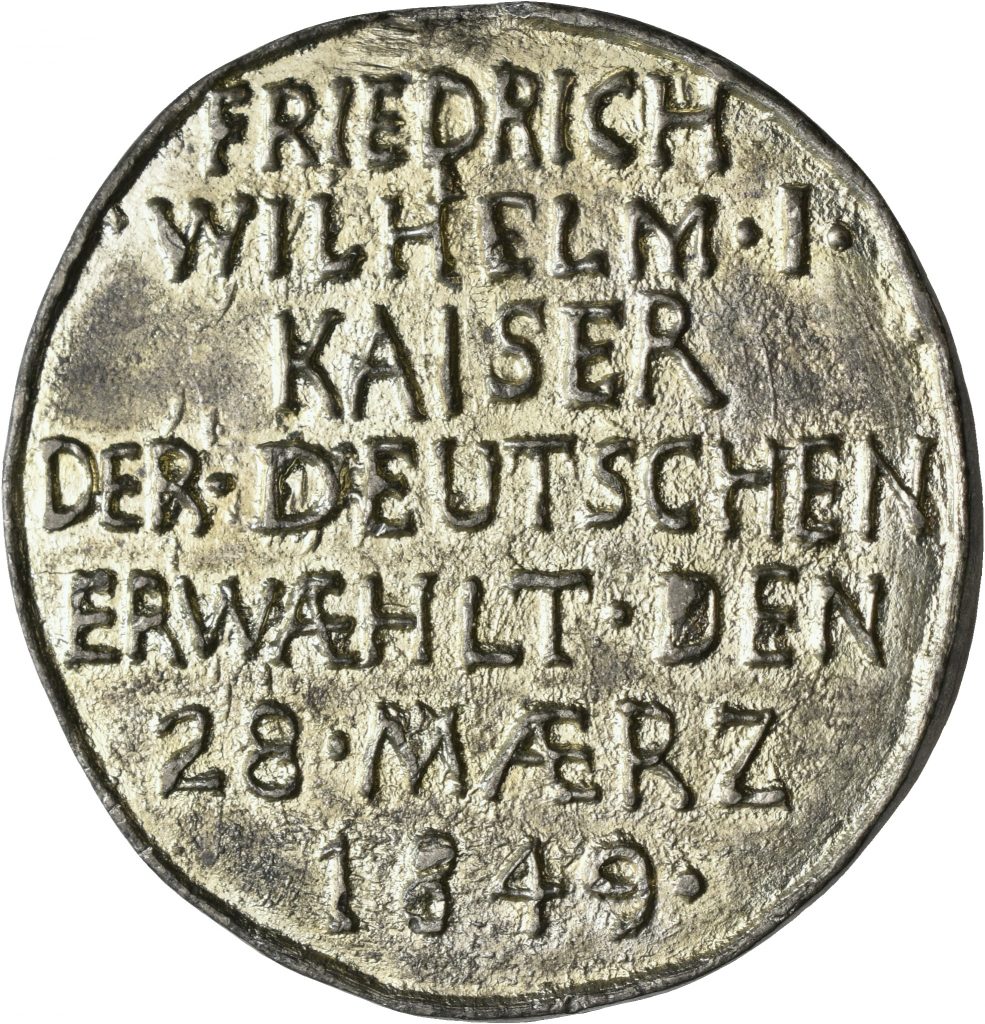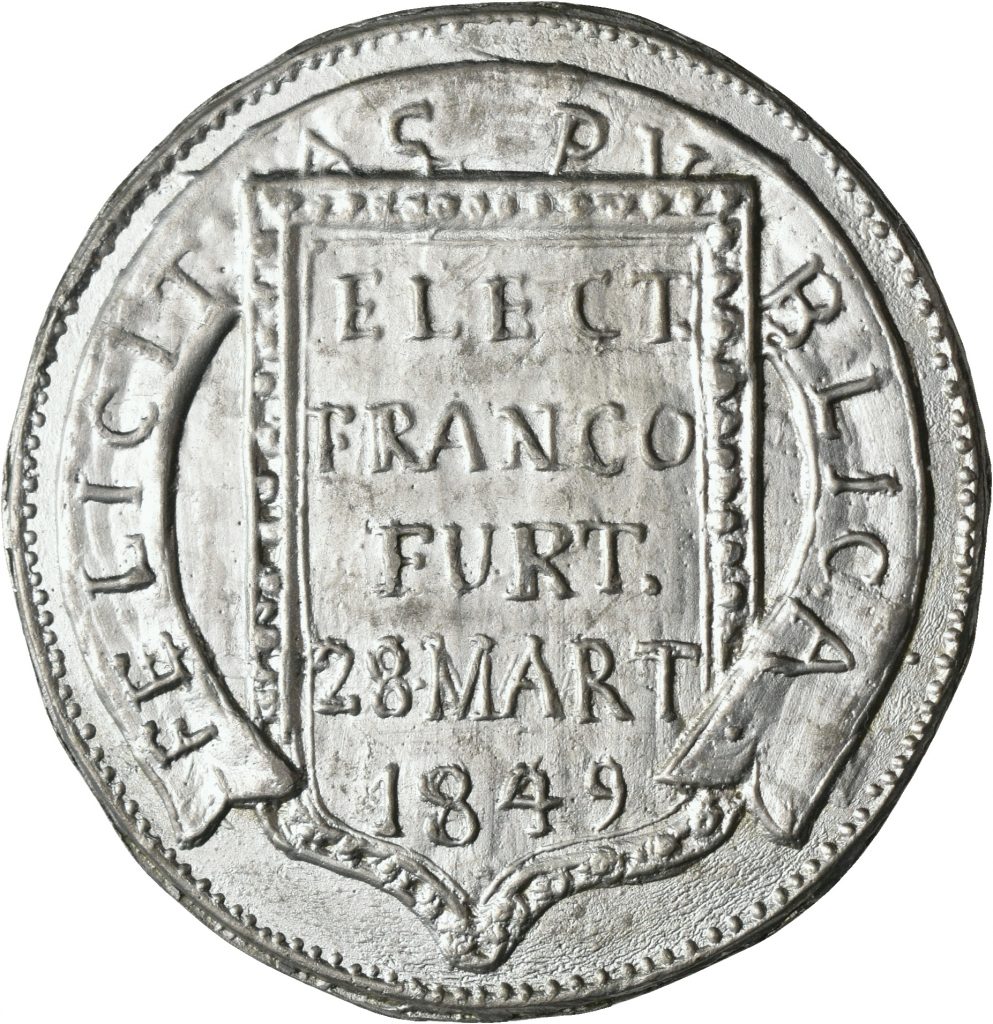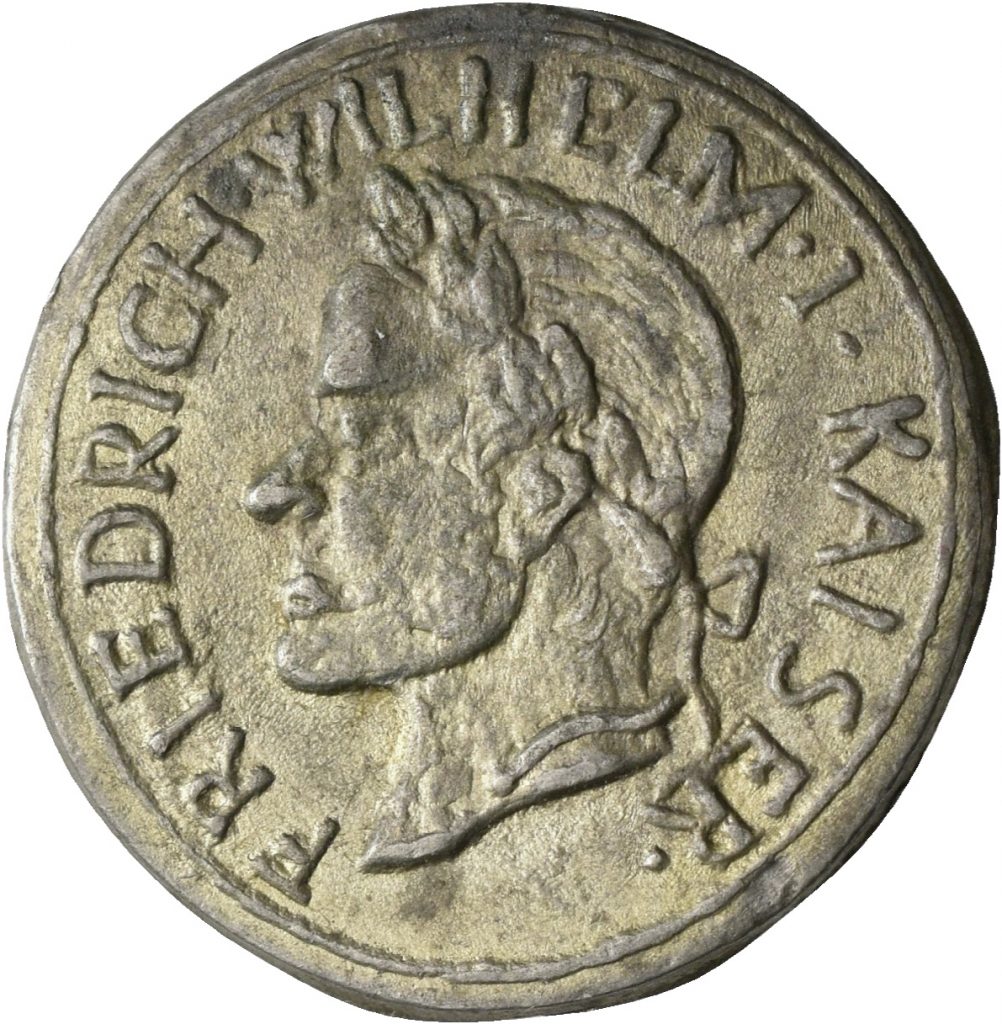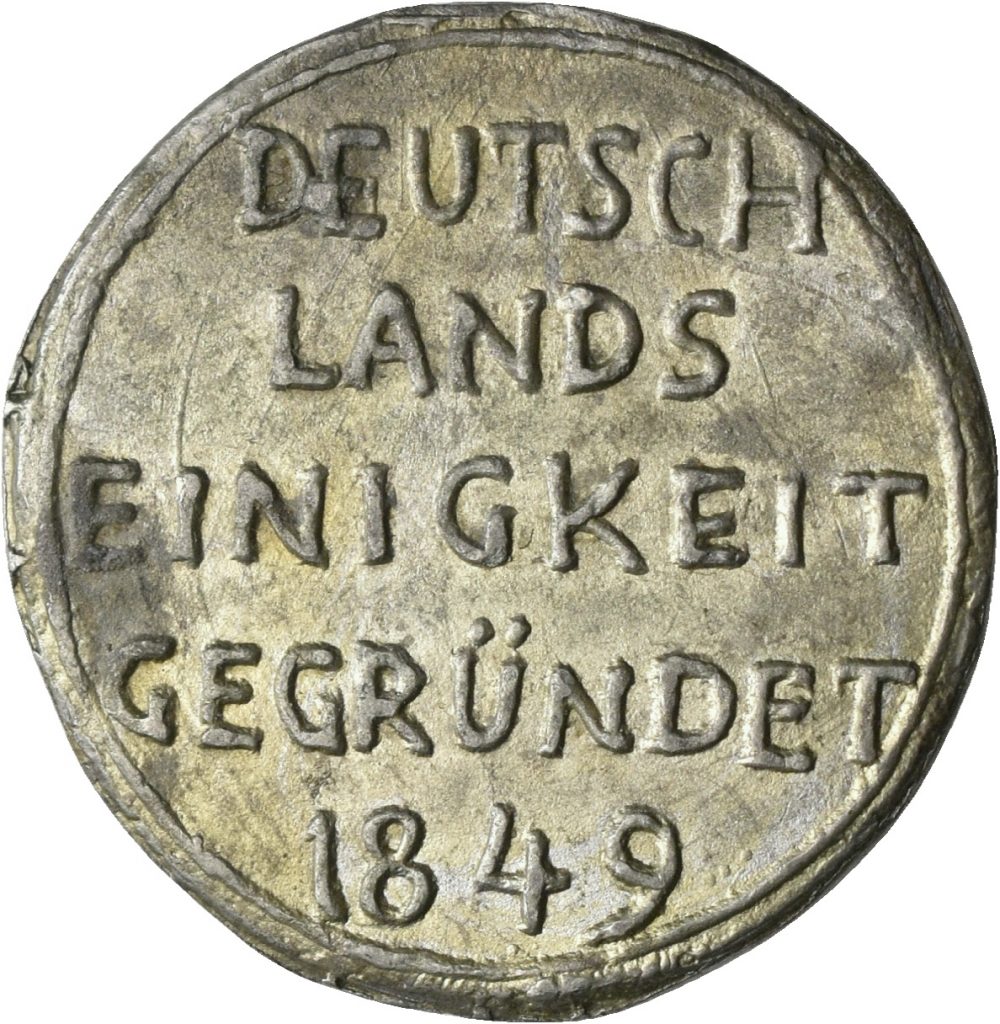
News from the Emperor
Frank Berger | 15. March 2023
The first German National Assembly that emerged from the March Revolution of 1848 wanted to offer the imperial crown to the King of Prussia – but it turned out differently. Frank Berger, curator for numismatics at the Historical Museum in Frankfurt am Main, describes gold coins that were minted in anticipation of the coronation of Friedrich Wilhelm IV as emperor. They can currently be seen in the exhibition “Roads not Taken”.
Ever since 1356, Frankfurt had been the official location where the election of the German emperor took place. And since the city on the Main regularly hosted the imperial coronations, Frankfurt was considered a kind of capital of the Holy Roman Empire of the German Nation. The last election and coronation that had been conducted there was for Emperor Franz II in 1792. In 1806, because Napoleon forced him, Franz abdicated the imperial throne. Thus, the Empire no longer had an emperor and ceased to exist. The imperial crown and insignia became that which they are today, museum pieces.
In Frankfurt in 1848, the first elected National Assembly decreed that Germany should have an emperor once again. On 28 March 1849, the parliament announced the publication of a democratically adopted pan-German constitution. The head of the empire was to bear the title of “Kaiser”, or “Emperor”, and be forever entitled to hand down the honour to his first-born son. On this day the National Assembly elected the King of Prussia to become the new emperor. A delegation of 32 deputies under the leadership of the jurist Eduard Simson travelled to distant Berlin to offer Prussian King Friedrich Wilhelm IV this high honour.
Since there was finally going to be an emperor in Frankfurt again, the joy was great. The city promptly minted a gold coin to celebrate the election of the emperor. Doubling down on this, the souvenir industry swung into action. In this revolutionary period, all Germany looked toward Frankfurt and the city became a hotspot of event tourism. Parliament and parliamentarians were the object of curiosity and admiration. Clever business people immediately produced tokens heralding the imperial election.
One of these tokens was a medal (Ill. 1) that proclaims in seven lines on the front side the joyful event of the imperial election. The reverse shows the symbol of the German Confederation, the two-headed eagle (without crowns), which bears on its breast the shield of the Hohenzollerns. Hence, a coat-of-arms was already proposed for the future emperor.
A further medal (Ill. 2) showed an emperor in full regalia. We see him in a half-length portrait, draped in a splendid robe and cloak. With the imperial apple, sceptre and crown, he bears the three insignias of his grandeur. The circumscription describes him in the finest Latin as FRIDERICVS WILHELMVS GERMANIAE IMPERATOR. That was how people in Frankfurt imagined the new emperor to be. The reverse was dominated by a shield with a text that names the place and date of the imperial election. The circumscription FELICITAS PVBLICA is taken from ancient Roman coins and intends to state that a general condition of happiness and prosperity begins with the election of an emperor.
A third medal (Ill. 3) also harks back to the Roman tradition. It evidently addresses an educated public. It shows a man’s head with a laurel crown to the left, like it was usually portrayed on imperial Roman coins. The head depicted on this medal, however, does not have the slightest similarity with the actual Friedrich Wilhelm IV. Therefore the inscription explains who this figure represents, namely FRIDRICH WILHELM I: KAISER. The reverse of the medal celebrates German unity, supposedly to be founded in 1849.
This was not to happen. On 28 April 1849, a few weeks after the election, the Prussian king refused to accept the imperial German crown. The Paulskirche parliament, he proclaimed, had no right to offer an imperial crown. This right, in the best case, belonged to Emperor Franz Joseph of Austria, Friedrich Wilhelm himself, or his colleagues among the imperial princes. The brief dream of an emperor in Frankfurt was dashed. The souvenirs could be melded down again.
It was not so that the refusal of the imperial crown brought the Prussian king only sympathy. In fact, he became the target of the prevailing satire. Friedrich Wilhelm and Germania inhabit, for example, a scene in Mozart’s Magic Flute (Ill. 4). Pamina, here representing Germany, kneels beseechingly before her abductor, the high priest Sarastro. With his spiked helmet and eagle coat-of-arms and with two bottles of champagne in his belt, the priest is easily recognised as the king. He mouths the words: “I do not want to compel you to love, yet I shall not give you your freedom.” The public, in the person of the National Assembly deputies, looks on from the side. In reality, Friedrich Wilhelm IV never enjoyed the enthusiasm, let alone love, of the deputies in Frankfurt or the people of Germany. The majority of those gathered in Frankfurt never wanted him, but rather, if they had had a choice, Archbishop Johann, the brother of Franz, the last legitimate emperor.
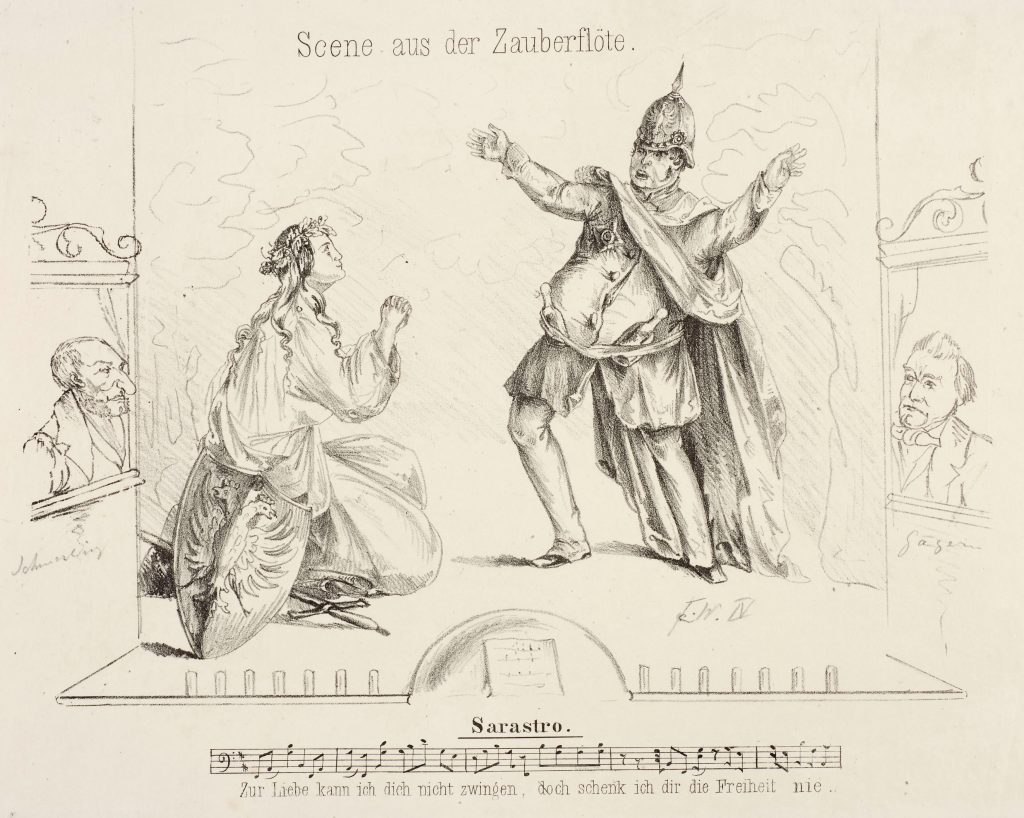
When the Prussian king then tells the Germans: “Yet I shall NEVER give you your freedom,” he shows his contempt for the will of the people and his rejection of any kind of constitutional limitation of his power. The souvenirs and the caricature show two ways of reacting to the imperial election. Brief enthusiasm here, acrimony there.
|
Foto: privat |
Frank BergerFrank Berger ist Frank Berger is curator for numismatics at the Historical Museum, Frankfurt. The museum’s permanent exhibition has a large section devoted to the topic of the Paulskirche assembly and the events of 1848/49. |
All pictures: Historical Museum Frankfurt. Ill. 1-3 F. Berger; Ill. 4 H. Ziegenfusz.

